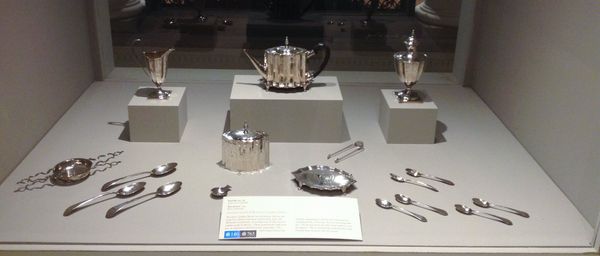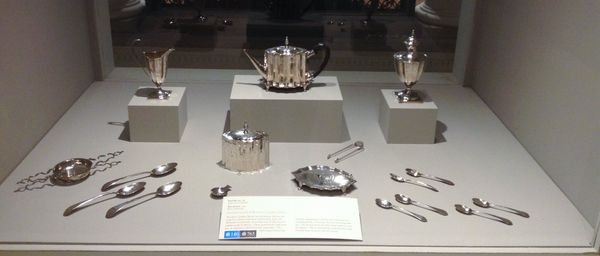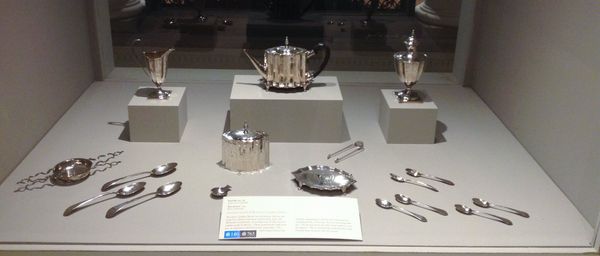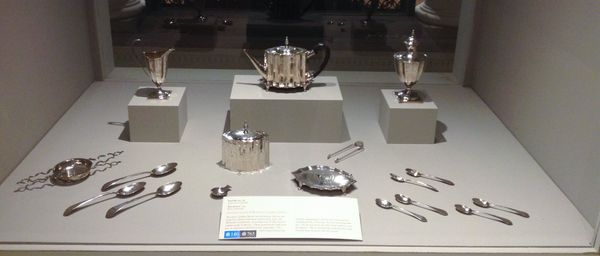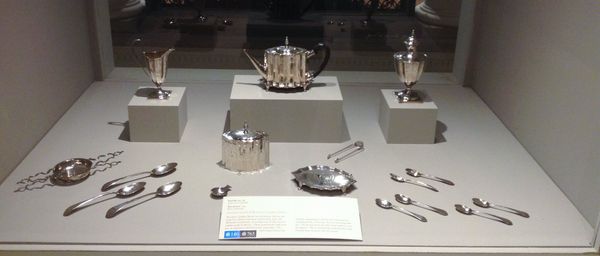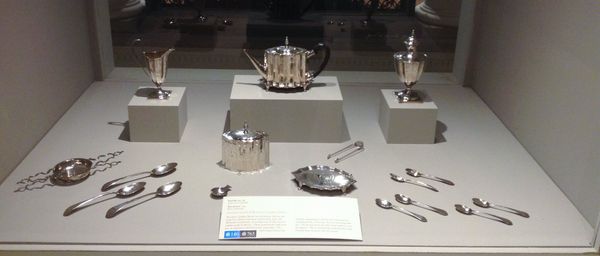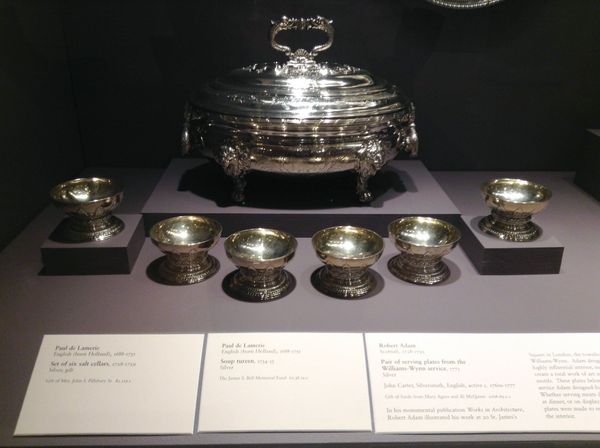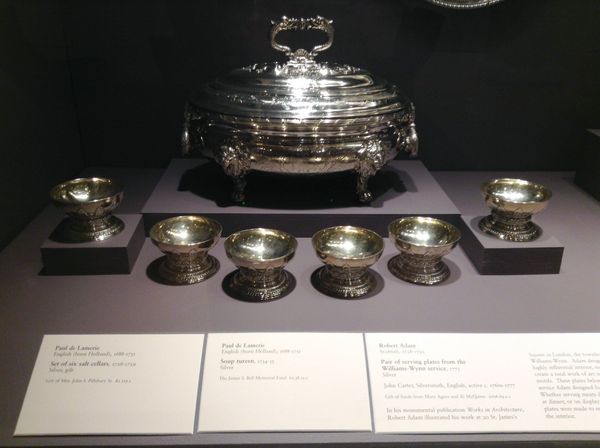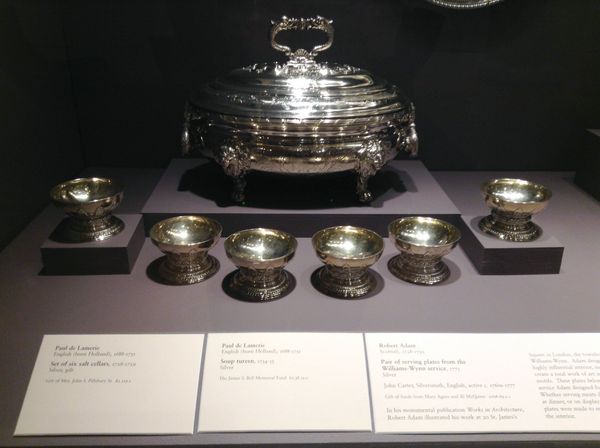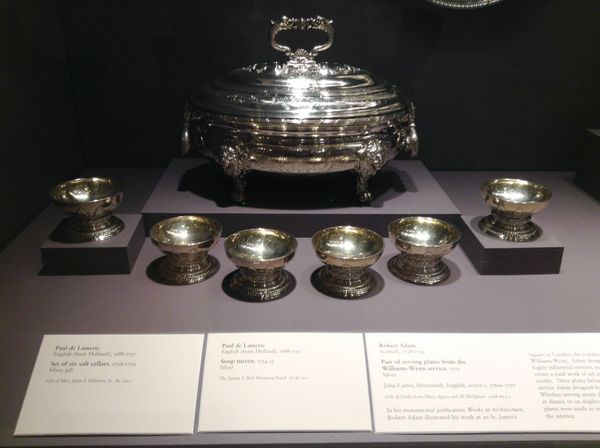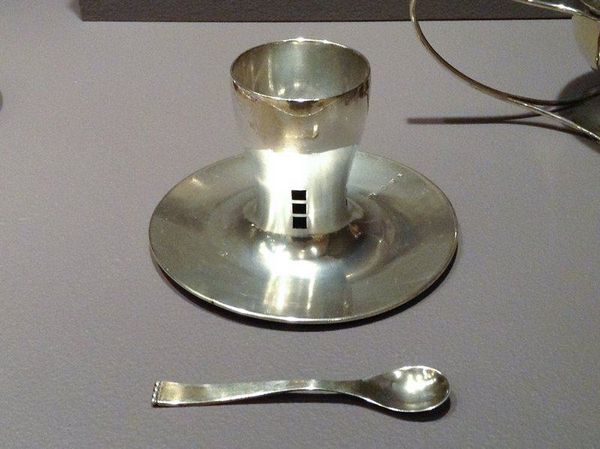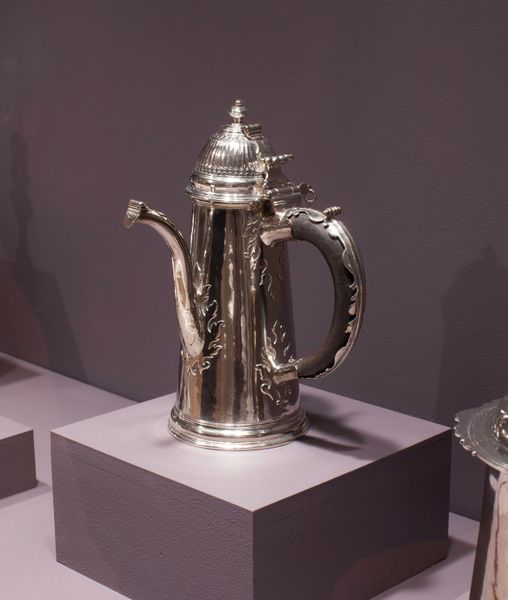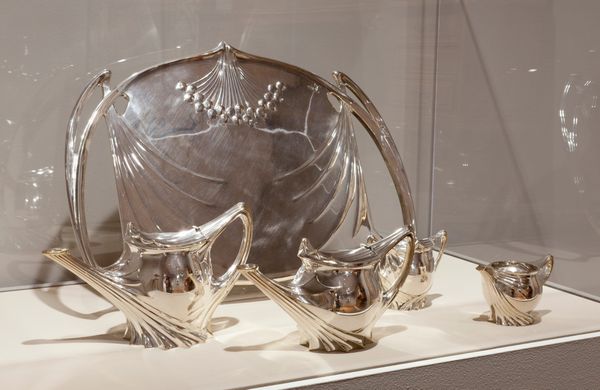
silver, metal
#
silver
#
metal
#
united-states
Dimensions: 5-11/16 x 1-1/16 x 7/16 in. (14.4 x 2.7 x 1.1 cm)
Copyright: Public Domain
Editor: So, this is a collection of silver tableware, including a piece called "Teaspoon," made by Paul Revere, at the Minneapolis Institute of Art. Looking at all these pieces, there is something that feels deeply… colonial, almost austere, in its precision. What do you make of it all? Curator: There's an undeniable cultural weight, isn't there? These aren't just objects; they are symbols of status, tradition, and a specific kind of American identity. Revere's name alone evokes so much – revolution, craftsmanship, and, let's not forget, commerce. Do you notice the repetition of forms and the emphasis on light reflected in the surfaces? Editor: Yes! The repeated forms definitely feel intentional and contribute to a sense of order, or perhaps, expectation. It is striking, considering Revere's broader legacy. Curator: Exactly. Think about the act of taking tea during that era. It was about so much more than just a drink. It was about social ritual, trade, and ultimately, political power. The teaspoons, teapots, and sugar bowls were imbued with the weight of these associations. It is a very specific class, very specifically engaging in leisurely rituals. What emotional associations do you draw from this piece? Editor: I can appreciate that tension now. I had not immediately grasped the intricate connection to colonial culture and, more broadly, its role within American society. Now the material really pops. Curator: Precisely, the silver is cold, smooth, very expensive. Consider what it meant to have such material in an age before mass production, the gleam suggesting luxury, but also a stark formality. Hopefully you understand that cultural meaning is not confined to a time period, but expands through each interaction and analysis.
Comments
No comments
Be the first to comment and join the conversation on the ultimate creative platform.
